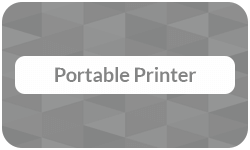
There are many types of printers, including inkjet and laser models, each suited to different printing needs. As technology evolves, devices are becoming more compact and mobile. One result of this trend is the portable printer, a convenient option for photos or document printing while away from a traditional office setup. These devices are especially useful for people who travel or work in the field.
Inhaltsverzeichnis
Definition: Portable printer
Portable printers (or pocket printers) are compact and lightweight devices designed for on-the-go printing, which makes them ideal for business professionals, travelers, and anyone in need of convenience. These printers are often battery-powered and support wireless connectivity.
Online A4 printing for $0.10
- Quick production times & reputable delivery
- Professional A4 prints for personal and business use
- Configure the printing specifications for your A4-size prints
Learn more!
How it works
Pocket printers operate similarly to standard printers but are optimized for convenience and size. Most models connect to smartphones, tablets, or laptops via Bluetooth, Wi-Fi, or USB. Depending on the type, these wireless printers use different technologies to transfer printing ink or heat onto paper. Users simply load the printer paper, connect their device, and send the file to print, often using a dedicated app or driver-free printing feature.
Types
Portable printers come in several types. The most common ones are listed below.
Inkjet portable printers use liquid ink sprayed through nozzles to produce detailed text and color images. They’re great for printing high-quality photos or documents, but may require regular cartridge replacements, which can be expensive.
Thermal portable printers such as label printers use heat to print on specially coated paper, making them ideal for receipts, label, and quick text prints. They’re lightweight, quiet, and don’t use ink, but they usually can’t print in color.
Less common in portable printers are laser printers. They use toner and a laser beam to create sharp, fast prints. They are typically bulkier and pricier but provide professional-quality results for heavy-duty use.
Photo portable printers are designed specifically for printing small-format photos. They’re often connected directly to smartphones and use dye-sublimation or ZINK (zero ink) technology. They’re popular for casual or creative uses.
PDF printing at BachelorPrint from $0.10
- Upload your files & order printed PDFs in minutes
- Secure online PDF printing service with reliable delivery
- High-quality prints from any PDF, including reports & more
Learn more!
Benefits & disadvantages
Below, we have listed the advantages and disadvantages of portable printers.
Pros
- Quick setup
- Easy to carry
- Compact size
- Less expensive
- Wireless connectivity
- Great for small print jobs
Cons
- Limited functionality
- Higher cost per print
- Limited paper handling
- Limited durability of prints
- Lower print quality & speed
- Possible connectivity issues
FAQs
That depends on your needs. Pocket printers can be worth it for people who frequently need to print photos or small documents while traveling. They’re light and great for casual use, but they may not be the best option for high-volume or professional printing needs.
That depends on the type of portable printer. Many inkjet and laser portable printers can print on standard paper. Thermal portable printers use specialized, heat-sensitive paper that doesn’t require ink.
Some portable printers, such as thermal and ZINK (zero ink) printers, don’t require traditional ink. Thermal printers use heat to create images or text on special thermal paper, while ZINK printers rely on a heat-sensitive paper that contains color crystals that activate when heated.
Some disadvantages of portable printers are:
- Fewer features
- Lower print quality
- Limited paper handling capacity
- High ink or specialized paper costs